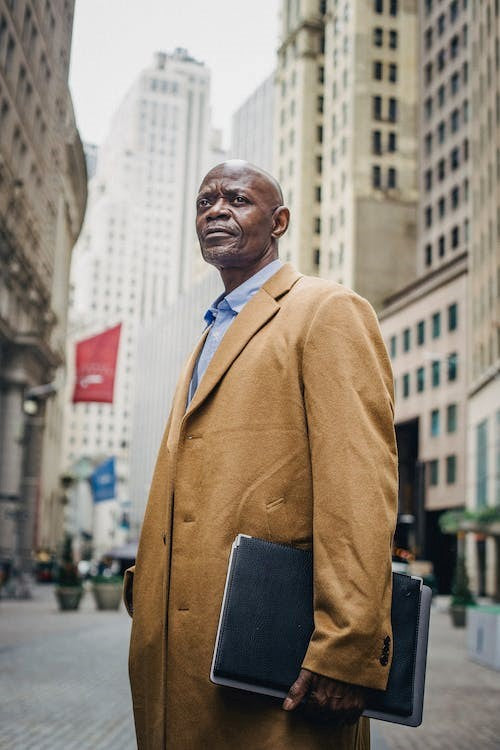What is the Difference between Overcoat and Jacket?
Posted by DANISH FAREED

In the realm of men's fashion, the terms "overcoat" and "jacket" are often used interchangeably, leading to confusion among individuals who may not be well-versed in sartorial nuances.
While both garments serve the primary purpose of providing warmth, they differ significantly in design, function, and formality. In this exploration, we will delve into the distinctive features that set overcoats and jackets apart, shedding light on when and how each should be worn.
The Overcoat: A Closer Look
Definition and Characteristics
An overcoat is a long, heavy outer garment typically worn during colder seasons. It is designed to cover a substantial portion of the body, extending below the hips or even reaching the ankles. Overcoats are crafted from thicker materials such as wool or cashmere to provide insulation against chilly weather.
Formality and Occasions
One key aspect that differentiates an overcoat is its formality. Overcoats are considered more formal attire and are often worn over business suits or formal wear. The length, combined with the heavier fabric, contributes to an elegant and refined aesthetic, making it suitable for professional and formal occasions. Overcoats come in various styles, including single-breasted and double-breasted, allowing individuals to choose one that complements their personal style.
Styling Tips
When donning an overcoat, it's essential to consider its length and how it complements the rest of your outfit. Ideally, the overcoat should be long enough to cover the suit jacket or blazer underneath. The color of the overcoat should also harmonize with the rest of the ensemble. For a timeless and versatile choice, neutral tones like black, charcoal, or camel are popular options.
The Jacket: Unveiling Its Diversity
Definition and Characteristics
A jacket, on the other hand, is a shorter, less formal outer garment. Jackets come in various styles, lengths, and fabrics, allowing for a wide range of versatility in both casual and semi-formal settings. Unlike overcoats, jackets may not extend beyond the hips and are often constructed from lighter materials, making them suitable for milder weather conditions.
Formality and Occasions
Jackets cater to a broader spectrum of occasions, ranging from casual outings to semi-formal events. Blazers, sports jackets, and leather jackets fall under this category, each with its distinct style and purpose. The versatility of jackets makes them a staple in wardrobes, easily paired with jeans for a casual look or worn over a dress shirt for a more polished appearance.
Styling Tips
Jackets offer more room for experimentation with styles, colors, and textures. Blazers, for instance, can be paired with dress pants for a business casual look or dressed down with denim for a smart-casual ensemble. Leather jackets, known for their rugged appeal, add an edgy touch to various outfits. When selecting a jacket, it is crucial to consider the occasion and the overall aesthetic you wish to convey.
Conclusion
In summary, the distinction between an overcoat and a jacket lies in their length, formality, and versatility. Overcoats, with their longer length and formal design, are ideal for professional settings and colder climates.
Jackets, encompassing a diverse range of styles and fabrics, cater to a broader array of occasions and weather conditions. Understanding the nuances of these two garments empowers individuals to make informed fashion choices, ensuring they are both stylish and well-suited for the specific context in which they find themselves.






















